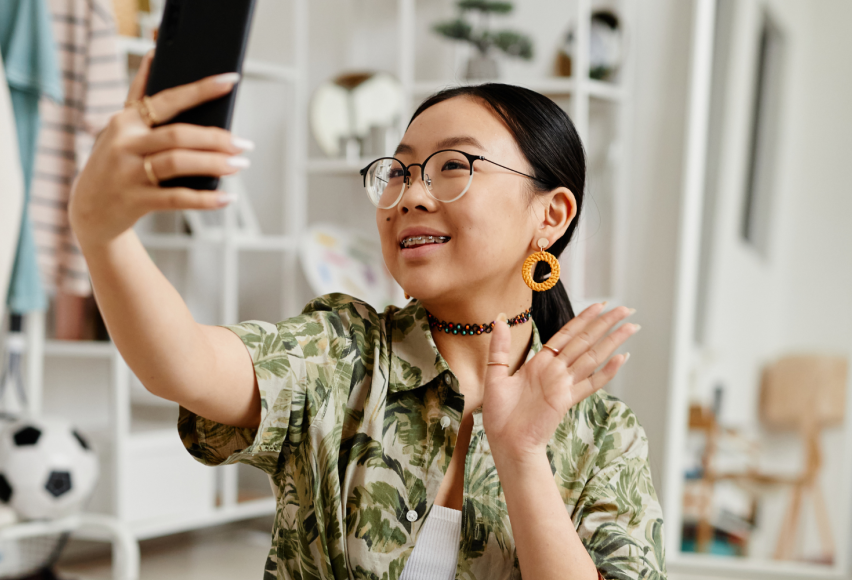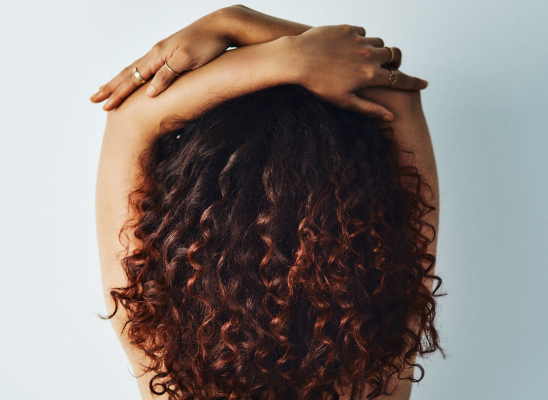Social Media and BFRBs: A Double Edged Sword

Online test
Find out the severity of your symptoms with this free online test
Body-focused repetitive behaviors (BFRBs), such as trichotillomania (also commonly referred to as hair pulling disorder or “trich”), significantly affect the lives of many individuals. While the prevalence of hair pulling is estimated to be about 1.7% of the population in the U.S., it is thought that the actual occurrence may be higher due to underreporting. For those living with hair pulling, it can be quite distressing and about 79% of people living with the disorder report at least one other comorbid mental health condition, most often anxiety or depression.
Trichotillomania is characterized by compulsive hair pulling that results in significant hair loss, emotional distress, and impaired interpersonal functioning. Trich more than just twisting, twirling, and tugging on one’s hair, and it’s not just a “bad habit”. Trich is driven by sometimes irresistible urges to pull one’s hair. Just what triggers those urges can come from almost anywhere, and sometimes from unexpected places. At the same time, people living with hair pulling often report feelings of embarrassment, guilt, and shame due to their condition. Feelings of isolation are common and finding support isn’t always easy.
Social media has become an integral part of modern life. It has changed the way we get information and the way we connect with others. For people living with a BFRB like trich, social media offers both support and challenges when it comes to navigating the various social media platforms. Having strategies for avoiding potential triggers while seeking information and support can help ensure a healthy relationship with online communities.
The Reality of Social Media
For those with trich and other BFRBs, navigating social media is often a journey of contradictions. On one hand, popular social media platforms can offer valuable support networks, connecting with others facing similar challenges, and providing access to resources and information they might not find elsewhere. On the other hand, these platforms can also serve as sources of stress and anxiety, potentially worsening their condition.
When you’re scrolling through social media, it can be easy to forget that everything you see isn’t always true. What you see on social media is what the person posting wants you to see. It can seem that everyone has a perfect life and you’ve somehow fallen short.
Social media often portrays idealized images and lifestyles, which can exacerbate feelings of inadequacy or self-consciousness. Having those kinds of thoughts can negatively affect your happiness and sense of well-being, even eroding your self-esteem and sense of worth. For people living with a BFRB, these seemingly perfect lives and appearances can lead to negative self-comparisons, heightened by the visible nature of their symptoms, like hair loss or skin damage.
Equally concerning, the anonymity and impersonal interaction on these platforms can sometimes give rise to negative comments or bullying, which can be particularly damaging. People living with a BFRB often struggle with feelings of embarrassment, shame and worries of being judged so encountering a “keyboard warrior” can be particularly distressing.
Potential Triggers on Social Media
Short of turning off your device, it’s hard to control what you might see in your feed or the comments you might receive. This means a higher risk of encountering something that triggers your urge to pull or pick.
More than just what you might see, triggers can come from a variety of sources on social media:
- Visual Triggers: Social media is heavily focused on visuals (e.g., pictures, reels, memes), and that content can sometimes trigger episodes of pulling or picking. Images or videos of individuals with 'perfect' hair or skin can provoke negative self-perception and distress in those with trichotillomania. Images of someone picking or pulling, or even engaging in behaviors that are similar (like removing lash extensions), can be triggering to some people.
- Stress and Anxiety: Social media can be a significant source of stress, with its constant barrage of notifications and the pressure to respond to or engage with others quickly. Dealing with the bullies or negative comments can be distressing and triggering too. For many with BFRBs, stress is a well-known trigger for their behaviors.
- Isolation and Comparison: Despite its ability to connect people, social media can also make users feel isolated and disconnected from reality, especially if they feel they do not measure up to the standards and lifestyles they see online.
Strategies for a Healthy Relationship with Social Media
1. Curate Your Content
To mitigate the negative impact, curate your social media feeds. Unfollow or mute accounts that tend to trigger negative feelings or behaviors. Look for accounts that promote positivity and mental health awareness. There are even accounts that promote BFRB support such as the TLC Foundation for BFRBs.
2. Set Clear Boundaries
Setting clear boundaries about social media use can significantly benefit mental health. Setting boundaries might look like:
- limiting the time spent on social media
- scheduling specific times for checking social media
- designating tech-free zones and times
Setting boundaries helps reduce the exposure to and overwhelming nature of constant connectivity and its associated stress. Also be sure setting boundaries includes setting boundaries with people you may encounter online. Avoid engaging with people who are unsupportive or negative or abusive towards you. Block or unfollow is a great tool when dealing with those keyboard warriors.
3. Seek Supportive Communities
There are numerous online groups and forums specifically for individuals with BFRBs. Platforms like Reddit, Facebook, and even dedicated apps bring together people facing similar challenges. These communities can provide empathy, advice, and understanding from those who truly know what it feels like to live with trichotillomania.
4. Engage in Mindful Consumption
Be mindful about how and why you’re using social media, and what your experience is. Reflecting on the emotions felt during and after using social media can provide insights into whether these platforms serve as a supportive tool or a source of stress for you.
5. Use Social Media for Positive Affirmations
You don’t have to settle for all the negativity that’s out there. With a little attention, you can transform your social media into a source of positive affirmation. Some ways to make the shift towards positivity might include following therapists, counselors, or motivational speakers who focus on self-acceptance and mental health, participating in positive challenges, or sharing one's own journey in a way that feels safe and validating.
6. Educational Outreach and Advocacy
Your experience is unique and just as you may find inspiration from someone’s journey, someone may find inspiration from you. For those comfortable with sharing their experiences, social media can be a platform for advocacy and education. Raising awareness about trichotillomania and other BFRBs not only helps reduce stigma, it also empowers people and educates others about the complexities of BFRBs.
Remain Mindful and Be Proactive
Social media is a double-edged sword for individuals with trichotillomania. While it can be a source of triggers and stress, it also offers unparalleled access to support and community. By taking proactive steps to manage your social media use, you can harness these platforms for their benefit, using them as tools for connection, education, and personal growth. The key is mindfulness and intentionality in engagement, ensuring that your digital interactions enhance rather than detract from your quality of life.
References
1. Grant, J. E., Dougherty, D. D., & Chamberlain, S. R. (2020). Prevalence, gender correlates, and co-morbidity of trichotillomania. Psychiatry research, 288, 112948.https://www.ncbi.nlm.nih.gov/pmc/articles/PMC7212053/
2. Nazari N. (2022). Perfectionism and mental health problems: Limitations and directions for future research. World journal of clinical cases, 10(14), 4709–4712. https://www.ncbi.nlm.nih.gov/pmc/articles/PMC9125265/
3. Anderson, S., Clarke, V., & Thomas, Z. (2022). The problem with picking: Permittance, escape and shame in problematic skin picking. Psychology and Psychotherapy: Theory, Research and Practice, 96(1), 83-100. https://bpspsychub.onlinelibrary.wiley.com/doi/10.1111/papt.12427
4. Reddit. (n.d.). https://www.reddit.com/r/trichotillomania/comments/sk0iiv/i_finally_found_what_triggers_my_trich/
5. Reddit. (n.d.) https://www.reddit.com/r/trichotillomania/comments/xn0rzn/new_social_media_trend_is_triggering_my_trich/
6. Palmer, C. (2023, November 1). In brief: Limiting social media boosts mental health, the negatives of body positivity, and more research. https://www.apa.org. https://www.apa.org/monitor/2023/11/benefits-limiting-social-media
Online test
Find out the severity of your symptoms with this free online test
Start your journey with TrichStop
Take control of your life and find freedom from hair pulling through professional therapy and evidence-based behavioral techniques.
Start Now



